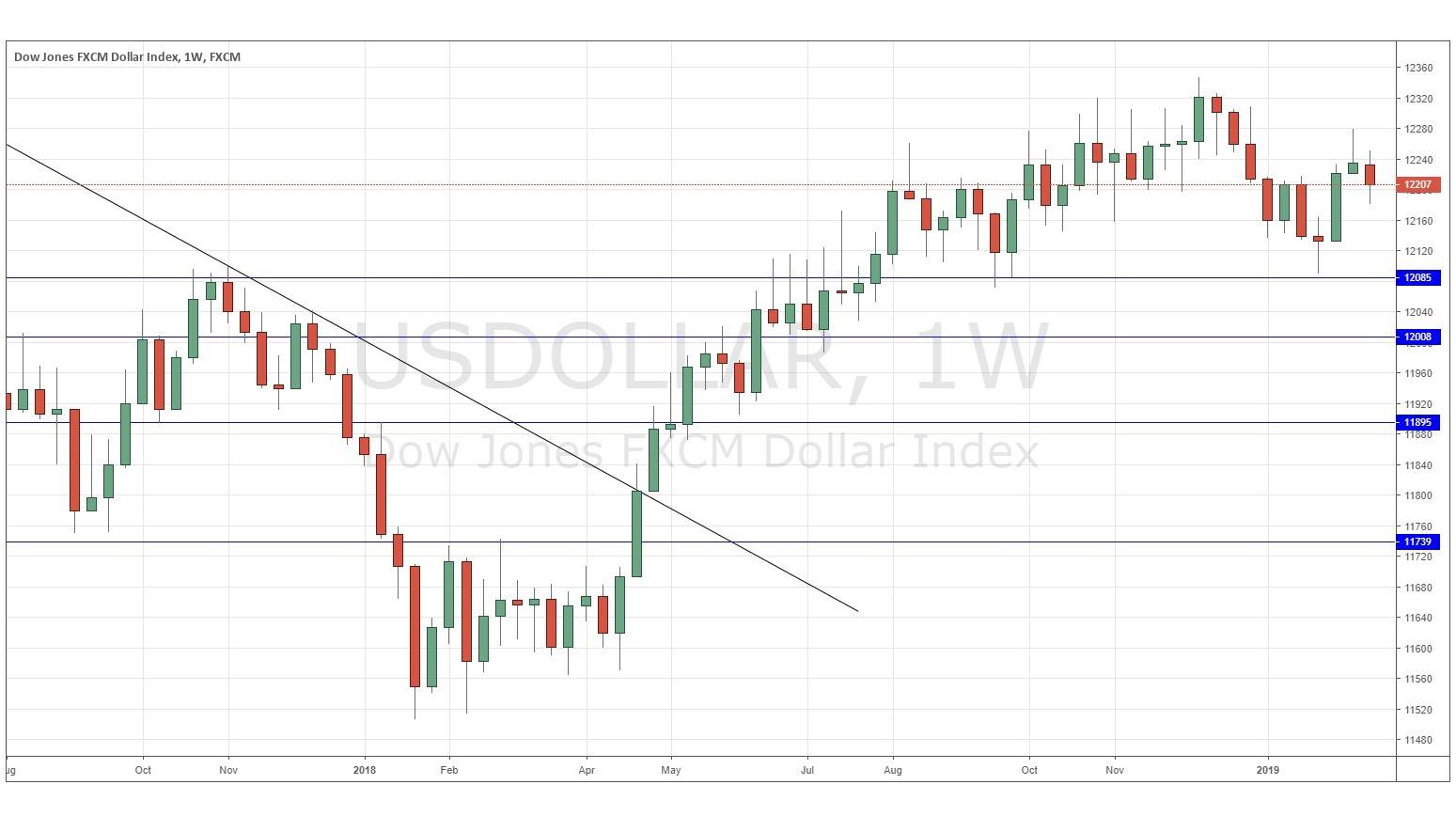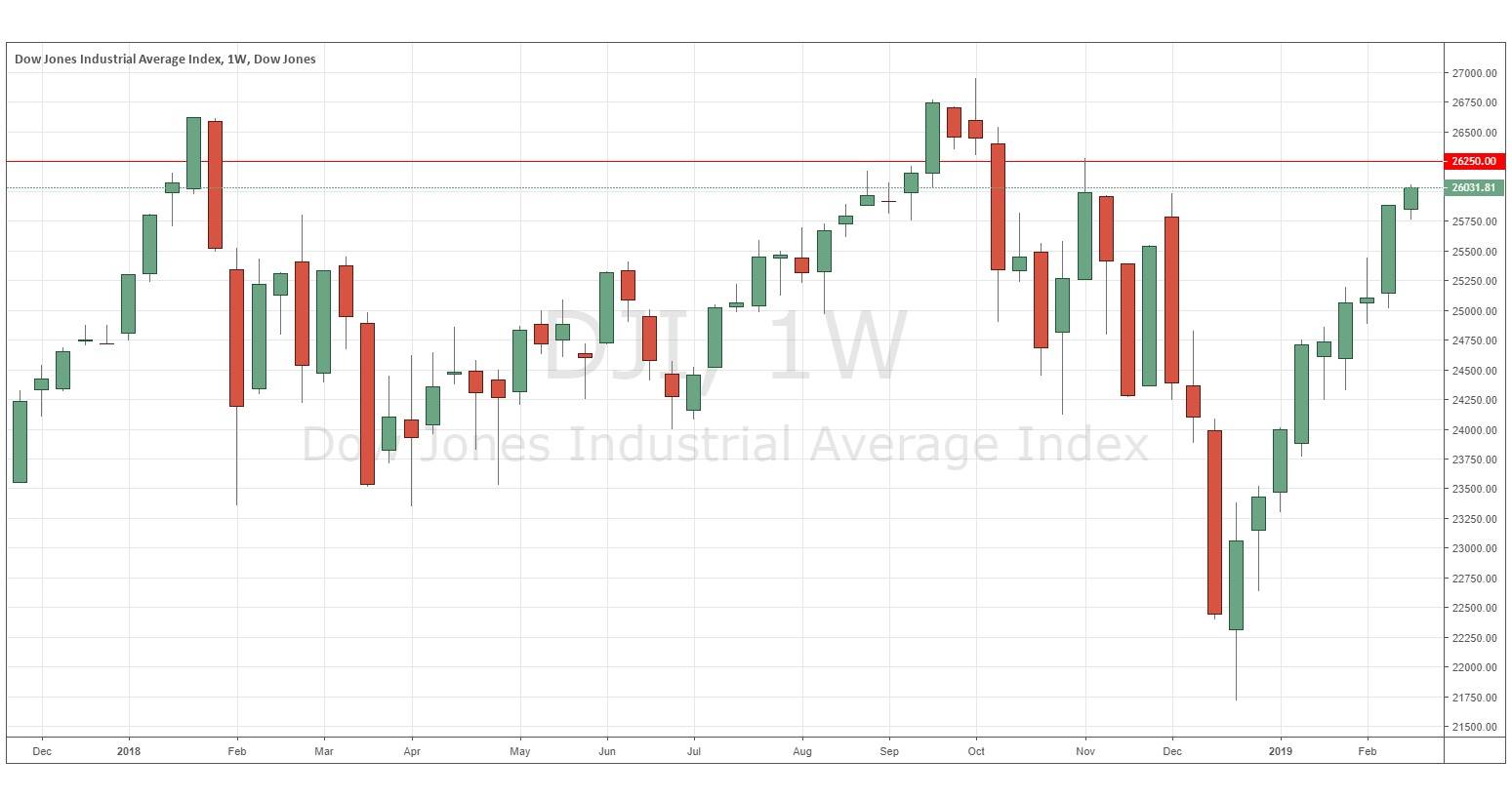The difference between success and failure in Forex trading is very likely to depend upon which currency pairs you choose to trade each week, and not on the exact trading methods you might use to determine trade entries and exits. Each week I am going to analyze fundamentals, sentiment and technical positions in order to determine which currency pairs are most likely to produce the easiest and most profitable trading opportunities over the next week. In some cases it will be trading the trend. In other cases it will be trading support and resistance levels during more ranging markets.
Big Picture 24th February 2018
In my previous piece last week, I was bullish on the Down Jones Industrial Average stock index. It closed the week up, by 0.70%.
Last week’s Forex market saw the strongest rise in the relative value of the British Pound, and the strongest fall in the relative value of the U.S. Dollar.
Last week’s market was generally less active and dominated by a continuing strong recovery in the U.S. stock market and the price of crude oil. Gold continues to show an upwards trend despite selling off. In Forex, the Swedish Krona and the Euro have been relatively weak, while the British Pound and Canadian Dollar are strong.
This week is likely to be dominated by crucial central bank input on the U.S. and Canadian Dollars. There will also be crucial votes on Brexit in the British Parliament on Wednesday which could have a significant bearing on the final Brexit outcome.
Fundamental Analysis & Market Sentiment
Fundamental analysis looks quite bullish on the U.S. Dollar. The stock market has continued to recover from its lows and is very close to being in a technical bull market again, with the major indices already trading above their respective 200-day moving averages. There are fears over the seeming high sensitivity of the economy to any further rate hikes, as evidenced by the fact that the FOMC appears to have largely given up on its originally planned further rate hikes for 2019. The ongoing trade dispute with China appears to be moving towards a positive resolution, which is a good sign.
Legally, only five weeks remain until the U.K. leaves the European Union, and the default position is that there will be no deal unless one is agreed before that date. The E.U. are still refusing to offer any substantial concessions on their offered terms of a deal, so we can expect continuing political uncertainty and machinations over the next few weeks in the U.K.
The ECB has recently taken a more dovish line on the Euro and the Euro weakened again very slightly last week. The Swedish Krona is also very weak, again hitting new 2-year lows on a strong bearish breakdown against the U.S. Dollar, as fears continue over the significance of data indicating a deterioration in the Swedish economy.
Precious metals, especially Gold, still look quite strong, as does Crude Oil, although both are well off their recent highs.
Technical Analysis
U.S. Dollar Index
The weekly price chart below shows that last week the USD Index fell a little, printing a small bearish candlestick with a meaningful lower wick, which suggests indecision. The price is down over 3 months, but up over 6 months, so we have a more mixed picture on the Dollar. The candlestick is hard to judge so next week’s direction again looks very uncertain.
Dow Jones 30 Index
The weekly chart below shows last week produced a relatively small, strongly bullish candlestick, which reached and closed at its highest close for 3 months, right at the high of the candlestick. Such strong movement in the U.S. stock market tend to continue and we have seen a strong recovery since the end of 2018, with the bear market recovering strongly and by some measurements it is already back in a bull market. The move in old-fashioned Down Jones 30 stocks is stronger than in the broader S&P 500 Index. However, the level at 26,250 may act as resistance.
Conclusion
This week I am bullish on the Dow Jones Industrial Average Index. The Forex and Commodity markets have a few trends, but they all look liable to turn so seem relatively unreliable.



